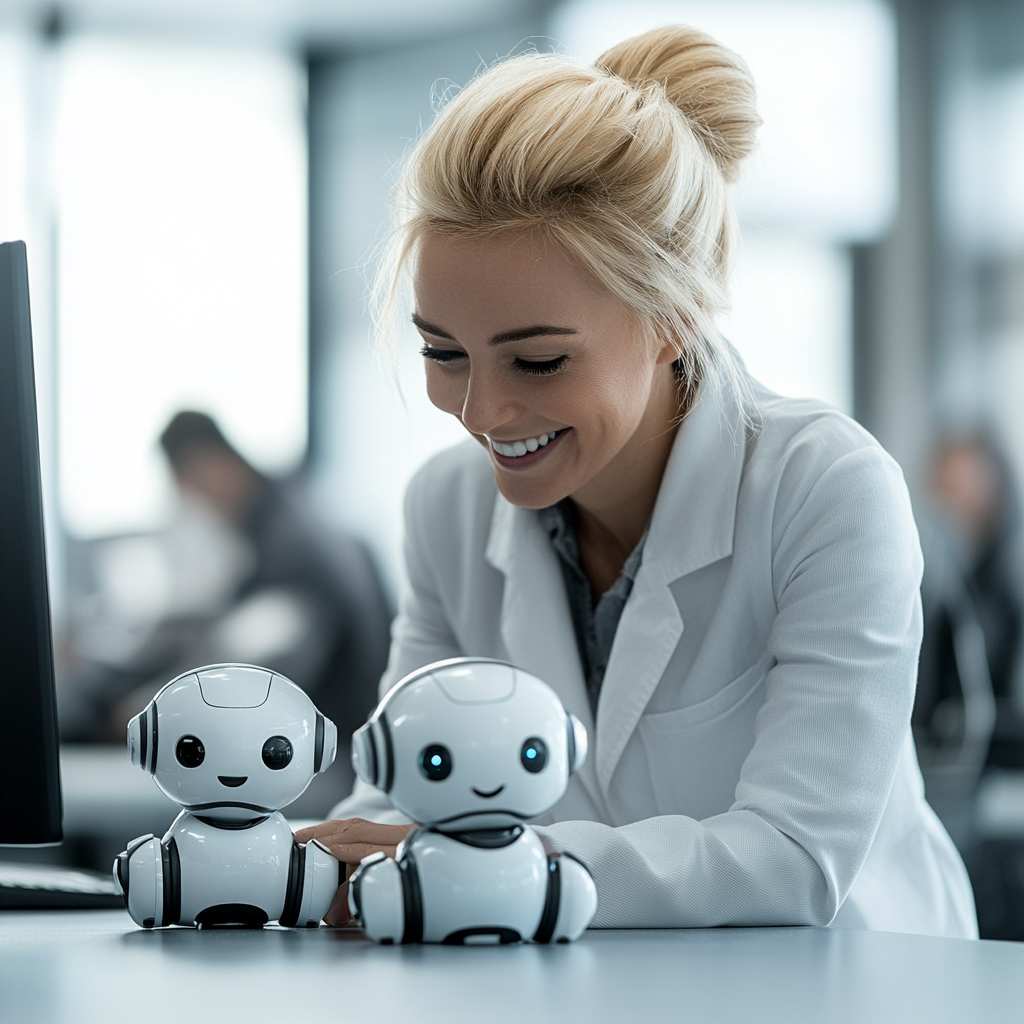Understanding GEN-θ
Generalist AI has introduced GEN-θ, a groundbreaking family of embodied foundation models. Unlike traditional models that rely on simulations or video data from the internet, GEN-θ is trained directly on high-fidelity raw physical interaction data. This innovative approach aims to create scaling laws for robotics similar to those established for large language models, utilizing continuous sensorimotor streams from real robots operating in diverse environments.
Harmonic Reasoning: Real-Time Thinking and Acting
One of the standout features of GEN-θ is its architecture, which enhances conventional vision and language models. It incorporates a concept known as Harmonic Reasoning, allowing the model to think and act simultaneously. This integration addresses a significant challenge in robotics: the need for real-time decision-making as physical conditions evolve. By processing asynchronous, continuous streams of sensing and acting, GEN-θ can respond to its environment more effectively than previous models.
Scaling Intelligence in Robotics
The Generalist AI team has observed a notable phase transition in the capabilities of GEN-θ as it scales within high data environments. Key findings include:
- 1 billion parameter models struggle with complex sensorimotor data during pretraining, resulting in a plateau in learning.
- 6 billion parameter models begin to exhibit strong multitasking abilities, benefiting from pretraining.
- Models with 7 billion or more parameters can internalize large-scale robotic pretraining, requiring fewer post-training adjustments for task adaptation.
This trend aligns with Moravec’s Paradox, which posits that physical commonsense and dexterity require more computational resources than abstract reasoning.
Scaling Laws for Robotics
The research emphasizes the importance of scaling laws that link pre-training data and computational power to downstream performance. The team analyzed various checkpoints from GEN-θ training runs and noted improvements in validation loss and next action prediction error during post-training, particularly in tasks such as:
- Dexterity tasks (e.g., building Lego structures)
- Industry workflows (e.g., fast food packing)
- Generalization tasks (e.g., following style instructions)
The relationship between the size of the pre-training dataset and downstream validation error can be expressed as:
L(D) = (Dc/D)αD
In this equation, D represents the number of action trajectories in pre-training, while L(D) denotes validation error on a downstream task. This allows robotics teams to estimate the necessary pre-training data for achieving target performance levels.
Infrastructure at Robotics Scale
GEN-θ is trained on an extensive in-house dataset comprising 270,000 hours of real-world manipulation trajectories. This dataset continues to grow by over 10,000 hours weekly, significantly surpassing previous large robotics datasets. To manage this vast operation, the research team has developed custom hardware and infrastructure, including:
- Dedicated internet lines to support uplink bandwidth from distributed sites
- Multi-cloud contracts and custom upload machines
- Over 10,000 compute cores for continuous multimodal processing
This robust system can process the equivalent of 6.85 years of real-world manipulation experience per day of training.
Pre-training Matters
The Generalist AI team has conducted extensive studies on eight pre-training datasets and ten long-horizon task sets. Their findings reveal that the mixture of data is as crucial as the volume itself, affecting model behaviors across three task groups:
- Dexterity
- Real-world applications
- Generalization
Performance is measured using validation mean squared error (MSE) and reverse Kullback-Leibler divergence, guiding teams in selecting models best suited for their specific needs, whether for supervised fine-tuning or reinforcement learning.
Key Takeaways
GEN-θ represents a significant leap in embodied foundation models, trained on high-fidelity raw physical interaction data. The model’s use of Harmonic Reasoning enables real-time thinking and acting, addressing critical challenges in robotics. Research indicates a vital intelligence threshold around 7 billion parameters, where models effectively leverage increased pre-training data. Understanding the scaling laws derived from GEN-θ’s performance can guide teams in determining data and compute requirements for achieving desired outcomes. The extensive dataset and robust infrastructure position GEN-θ at the forefront of robotics applications, emphasizing the importance of data quality and mixture design for optimizing model performance.
Frequently Asked Questions
- What is GEN-θ? GEN-θ is a family of embodied foundation models trained on high-fidelity raw physical interaction data, designed to enhance robotics capabilities.
- How does Harmonic Reasoning work? Harmonic Reasoning allows GEN-θ to think and act simultaneously, enabling real-time decision-making in dynamic environments.
- What are the scaling laws for robotics? Scaling laws connect pre-training data and computational power to performance, helping teams estimate necessary data for target outcomes.
- Why is pre-training important? Pre-training influences model behaviors and performance across different tasks, making the quality and mixture of data crucial for success.
- How does GEN-θ compare to previous models? GEN-θ outperforms previous models by processing real-world data directly, allowing for more effective learning and adaptability in robotics applications.


























